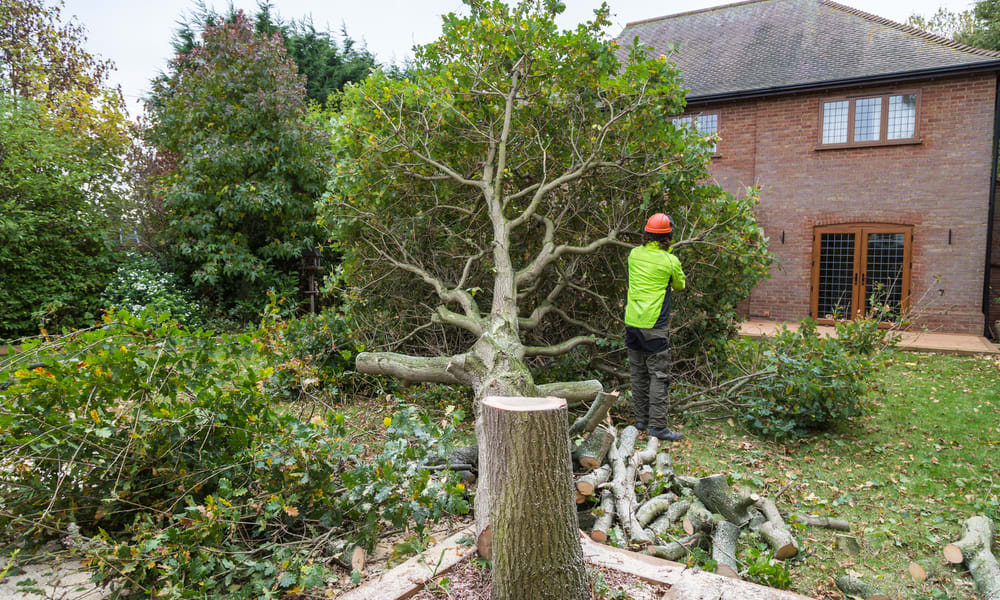Best Time, Cost, and Tips for Reliable Tree Trimming Services in the United States 2025
Choosing the right time to trim trees affects their health and your property’s safety. This article explains optimal seasonal timing, cost factors, and practical tips to find reliable tree trimming professionals across the United States in 2025, helping you maintain safer, healthier trees year-round.

When Is the Best Time to Trim Trees?
The ideal timing for tree trimming in the United States generally falls in late winter to early spring. During this dormant period, trees experience less stress, making it easier to see the structure of branches without leaves. This timing supports healthy regrowth in spring, as trimming encourages vigorous development of new shoots.
However, there are exceptions depending on the tree species:
- Spring-Flowering Trees: Trees like dogwood, magnolia, and cherry should be pruned immediately after they bloom in spring. Pruning at this time helps protect next year’s flower buds, ensuring robust flowering seasons ahead.
Regular trimming schedules vary by tree type:
- Mature Trees: Typically require trimming every 3 to 5 years.
- Young Trees: Benefit from trimming every 2 to 3 years to develop strong structure.
- Fruit Trees: Usually need annual trimming to maximize yield and health.
- Evergreen Trees: Often need less frequent trimming, sometimes spanning several years.
Understanding these seasonal and species-related nuances helps preserve tree health and improve safety around your property.
What Factors Affect the Cost of Tree Trimming Services?
Tree trimming costs in the United States for 2025 generally range widely depending on multiple factors. While exact prices vary by location and service provider, understanding what influences pricing can help homeowners budget wisely.
Key cost determinants include:
- Tree Size: The height and trunk diameter have the greatest impact on price. Larger trees require specialized equipment such as bucket trucks and involve greater safety risks, raising labor and equipment costs.
- Location and Accessibility: Trees close to power lines or buildings require additional precautions, which increase complexity and cost. Limited space that prevents equipment use can also drive prices higher due to additional manual labor.
- Tree Health: Diseased, damaged, or pest-infested trees may be unstable, necessitating extra safety measures and increasing costs.
- Geographic Region: Urban areas typically have higher labor and operating costs compared to rural or small-town locales, influencing service pricing accordingly.
- Number of Trees: The total number needing trimming can affect overall pricing, often priced per tree by professionals.
Typical Price Ranges
- Small Trees: Costs can start at a relatively low level due to manageable trimming requirements.
- Medium Trees: Average professional trimming costs generally fall between mid-range values suitable for typical residential trees.
- Large Trees (over 60 feet tall): These jobs are more costly, sometimes significantly above average, reflecting the need for advanced equipment and risk management.
Disclaimer: Prices and availability may vary by region, dealer, and current promotions. It’s recommended to verify costs with local service providers before making decisions.
How to Find Reliable Tree Trimming Services
Securing trustworthy and skilled tree trimming services is essential to ensure safety and tree health. Use the following strategies to identify reputable companies in your area:
- Seek Recommendations: Start by asking friends, family, or neighbors who have recently had tree work done. Trusted personal referrals can point you to quality providers.
- Check Online Reviews: Platforms like Google Reviews offer unbiased feedback, helping narrow your options based on customer experience and satisfaction.
- Verify Certification and Licensing: Good tree trimming companies employ certified arborists and possess proper licensing to comply with local regulations.
- Confirm Insurance Coverage: Liability insurance and workers’ compensation are crucial to protect you from potential damages or accidents during the job.
- Assess Equipment and Safety Practices: Reputable services use modern, well-maintained equipment and follow stringent safety standards, including protective gear for workers.
- Obtain Multiple Written Estimates: Request detailed quotes from at least three companies to compare costs, scope of work, and contractual terms carefully.
- Evaluate Reputation and Customer Service: Contact references and previous clients to gauge reliability, quality of work, project timelines, and cleanup policies.
Additional Practical Tips for Tree Trimming Projects
- If a tree is near power lines, contact your local utility company first; many offer free trimming for safety reasons.
- Consider companies that provide related services, such as stump removal, to consolidate tree care maintenance.
- Always prioritize company reputation and qualifications over the lowest price to avoid potential hazards and additional expenses down the line.
- Understand the difference between trimming (enhancing appearance) and pruning (improving health), as these services might vary in technique and cost.
- Stay informed about the health of your trees year-round to schedule timely maintenance.
Why Regular Tree Trimming Matters
Regular tree trimming promotes healthy growth, prevents disease, improves fruit production, and reduces safety risks like falling branches. Well-maintained trees also enhance the aesthetic appeal and value of your property. Working with qualified professionals in adherence to best practices ensures long-term benefits for your landscape.
Sources
- LawnStarter - How Much Does Tree Trimming Cost in 2025?
- Eduardo’s Tree Service - 5 Tips for Choosing the Right Tree Trimming Service
Disclaimer: The estimated costs and service availability referenced in this article vary by location, dealer, and current market conditions in the United States. Consumers are encouraged to perform independent research and consult with local professionals to obtain the most accurate and up-to-date information tailored to their specific needs.




